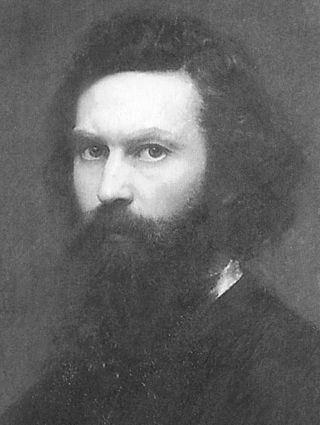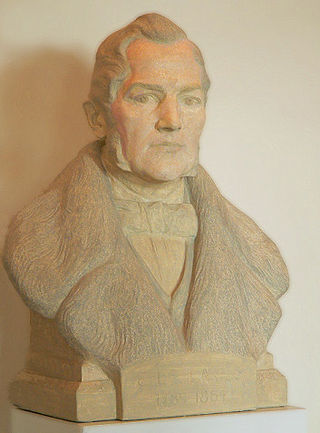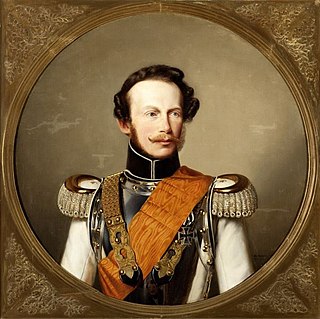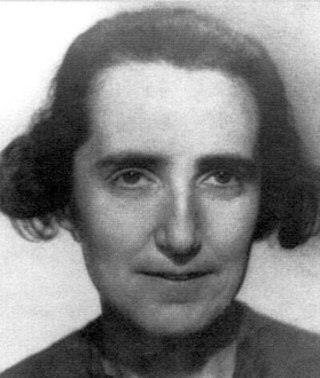
William I was King of Württemberg from 30 October 1816 until his death.

Princess Marie Ernestine Josephine Adolphine Henriette Therese Elisabeth Alexandrine of Hanover was the younger daughter of King George V of Hanover and his wife, Marie of Saxe-Altenburg.

Sophia Charlotte of Hanover was the first Queen consort in Prussia as wife of King Frederick I. She was the only daughter of Elector Ernest Augustus of Hanover and his wife Sophia of the Palatinate. Her eldest brother, George Louis, succeeded to the British throne in 1714 as King George I.

Victoria Louise of Prussia was the only daughter and the last child of Wilhelm II, German Emperor, and Augusta Victoria of Schleswig-Holstein. Through her father she was a great-granddaughter of both Emperor Wilhelm I and Queen Victoria. Her 1913 wedding to Prince Ernest Augustus of Hanover was the largest gathering of reigning monarchs in Germany since German unification in 1871, and one of the last great social events of European royalty before the First World War began fourteen months later.

Augusta of Saxe-Weimar-Eisenach was Queen of Prussia and the first German Empress as the wife of Wilhelm I, German Emperor.

Sophia Dorothea of Brunswick-Lüneburg-Celle was the repudiated wife of future King George I of Great Britain. The union with George, her first cousin, was a marriage of state, arranged by her father George William, her father-in-law the Elector of Hanover, and her mother-in-law, Electress Sophia of Hanover, first cousin of King Charles II of England. Sophia Dorothea is best remembered for her alleged affair with Count Philip Christoph von Königsmarck that led to her being imprisoned in the Castle of Ahlden for the last thirty years of her life.

Olga Nikolaevna of Russia was a member of the Russian imperial family who by marriage to Charles I of Württemberg became Queen consort of the Kingdom of Württemberg until Charles' death.

The Evangelical-Lutheran Church of Hanover is a Lutheran church body (Landeskirche) in the northern German state of Lower Saxony and the city of Bremerhaven covering the territory of the former Kingdom of Hanover.

Leopold IV Frederick, Duke of Anhalt was a German prince of the House of Ascania.

Theodor Friedrich Wilhelm Christian Kaulbach was a German painter from Bad Arolsen, Principality of Waldeck and Pyrmont. His father was Christian Kaulbach (1777–1847), a cabinet maker in Arolsen. He was also the cousin and at one time the student of the painter Wilhelm von Kaulbach, son of Philipp Karl Friedrich v. Kaulbach (1775–1846), goldsmith and amateur painter.

Georg Ludwig Friedrich Laves was a German architect, civil engineer and urban planner. Born in Uslar, Lower Saxony, he lived and worked primarily in the city of Hanover and also died there. He was appointed Oberhofbaudirektor, "court master builder", in 1852. As the leading architect of the Kingdom of Hanover for a career spanning 50 years, he had great influence on the urban development of this city. Alongside Karl Friedrich Schinkel in Berlin and Leo von Klenze in Munich, Laves was one of the most accomplished neoclassical style architects of Germany. As an engineer he developed a special iron truss lenticular or "fishbelly" beam bridge construction method, the so-called "Lavesbrücke". Laves found his final resting place in the Engesohde Cemetery in Hanover.

Alexander Gustav Adolf Graf von Schleinitz was the Foreign Minister of Prussia from 1858 to 1861 and minister for the royal household from late 1861 to his death.

Conrad Wilhelm Hase was a German architect and Professor. He was a prominent representative of the Neo-Gothic style and is known for his preservation work.

Prince Frederick William Louis of Prussia was a Prussian prince and military officer.

Cora Berliner was an economist and social scientist and a victim of the Nazi regime. She was a pioneer of social work.

The Hanoverian school of architecture or Hanover School is a school of architecture that was popular in Northern Germany in the second half of the 19th century, characterized by a move away from classicism and neo-Baroque and distinguished by a turn towards the neo-Gothic. Its founder, the architect Conrad Wilhelm Hase, designed almost 80 new church buildings and over 60 civil buildings alone. In addition, Hase taught for 45 years at the Polytechnic University in Hanover and trained around 1000 full-time architects, many of whom adopted his style principles.

The Garden Cemetery is a cemetery in Hanover, Germany. It was created in 1741 and is located by the Garden Church built in 1749. The cemetery and the church are both named after the garden parish outside the former parish city walls in front of Aegidien Gate. The cemetery, which contains a number of classicising grave markers from the first half of the nineteenth century, was closed in 1864 with the establishment of the Stadtfriedhof Engesohde. Today it forms a park in the middle of inner city Hanover. The graves of Charlotte Buff, the astronomer Caroline Herschel and the painter Johann Heinrich Ramberg are located here. The Gartenfriedhof lies on Marienstraße between Warmbüchenstraße and Arnswaldtstraße.

Major-general Friedrich Otto Gebhard von Kielmansegg was a German soldier and officer in the service of the Kingdom of Hanover who fought during the Waterloo Campaign.

The Old Town Hall is a former, and the first, town hall in the German city of Hanover. Originally built in the old city district in 1410, replaced by the New Town Hall in 1913, and extensively restored in 1953 and 1964 after heavy bomb damage in World War II, it is the oldest secular building in the city. The market façade with the highly sophisticated Brick Gothic of the lucarnes has been preserved and partly restored in its medieval shape. Some elements of it were copied on other wings of the building.
Dorothea Nolte, was a German lawyer, administrative officer and politician (SPD). After attending school, she studied law at the Westfälische Wilhelms-Universität in Münster. Together with her husband, she opened a law firm in Berlin in 1933 and then sat down as a lawyer for the politically persecuted, including for the photographer Lotte Jacobi. Bähnisch was the president of the Regierungsbezirk Hannover from 1946 to 1959, thus, she was the first woman in Germany, who held the office of a government president.



















